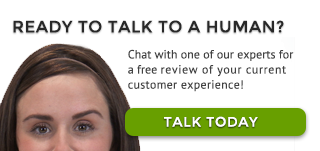 In this world, a glimpse into the future comes at a high price. From horse races to elections, people are willing to pay top dollar for a better prediction of what’s coming up. The entire field of market research is funded by this deep desire for accurate prognostication. Business leaders who pay for market research services hope that their investment will pay off in an increased ability to predict and influence future customer behavior. However, soothsaying has never been a simple task, and it’s often difficult for market researchers to match their customer experience software with business outcomes.
In this world, a glimpse into the future comes at a high price. From horse races to elections, people are willing to pay top dollar for a better prediction of what’s coming up. The entire field of market research is funded by this deep desire for accurate prognostication. Business leaders who pay for market research services hope that their investment will pay off in an increased ability to predict and influence future customer behavior. However, soothsaying has never been a simple task, and it’s often difficult for market researchers to match their customer experience software with business outcomes.
In the past, we’ve discussed why we think Customer Engagement is the best measurement to follow—namely because it actually correlates to future business outcomes, including profit margin, share-of-market, and ROI, a correlation which customer satisfaction research has not found. This year’s Most Engaged Customers study (MEC) turned up more reasons to follow Customer Engagement: it correlates strongly to certain future customer behaviors.
To conduct the MEC study, PeopleMetrics interviewed more than 5,000 consumers to rank more than 60 brands in 12 different industry sectors. To establish Customer Engagement scores, PeopleMetrics inquired about Retention, Effort, Advocacy, and Passion. PeopleMetrics asked each consumer to respond to questions about these qualities using a five-point agree/disagree scale, with a “5” meaning “Strongly Agree.” For instance, to assess Retention, we asked customers to provide an agree/disagree score for the statement, “Given the chance, I would do business with [Company] again.” Respondents were grouped into four categories: Fully Engaged, Engaged, On-the-Fence, and Actively Disengaged. A Fully Engaged Customer is one who gives all “5s” to all four questions. An Engaged Customer gives “4s” and “5s;” an ambivalent or On-The-Fence customer gives a mix of ratings, and an Actively Disengaged customer gives at least one “1” (strongly disagree) or “2.”
Once we established customer Engagement levels, we then looked into how Customer Engagement relates to desirable customer behaviors. We found that Customer Engagement is a powerful predictor of the following customer behaviors:
-
More Visits to the Company Website. Over a six month period, fully engaged customers visit a company’s website twice as often as On-the-Fence or Actively Disengaged customers.
-
More Online Purchases. For those brands that sell their wares online, full customer engagement translates into three times as many online purchases as compared to shoppers who are ambivalent about the brand.
-
Higher Conversion Rates. Highly engaged customers convert one out of every two web visits into purchases. On-the-Fence customers, in comparison, convert only one out of every four times.
-
More Frequent Recommendations. Fully Engaged Customers recommend an organization twice as often as those who are On-the-Fence.
An African proverb states, “The future belongs to the people who prepare for it today.” By boosting customer engagement levels now, you can see more positive consumer behavior in the future.
[photo: Jakub Krechowicz]






%20(1).png)